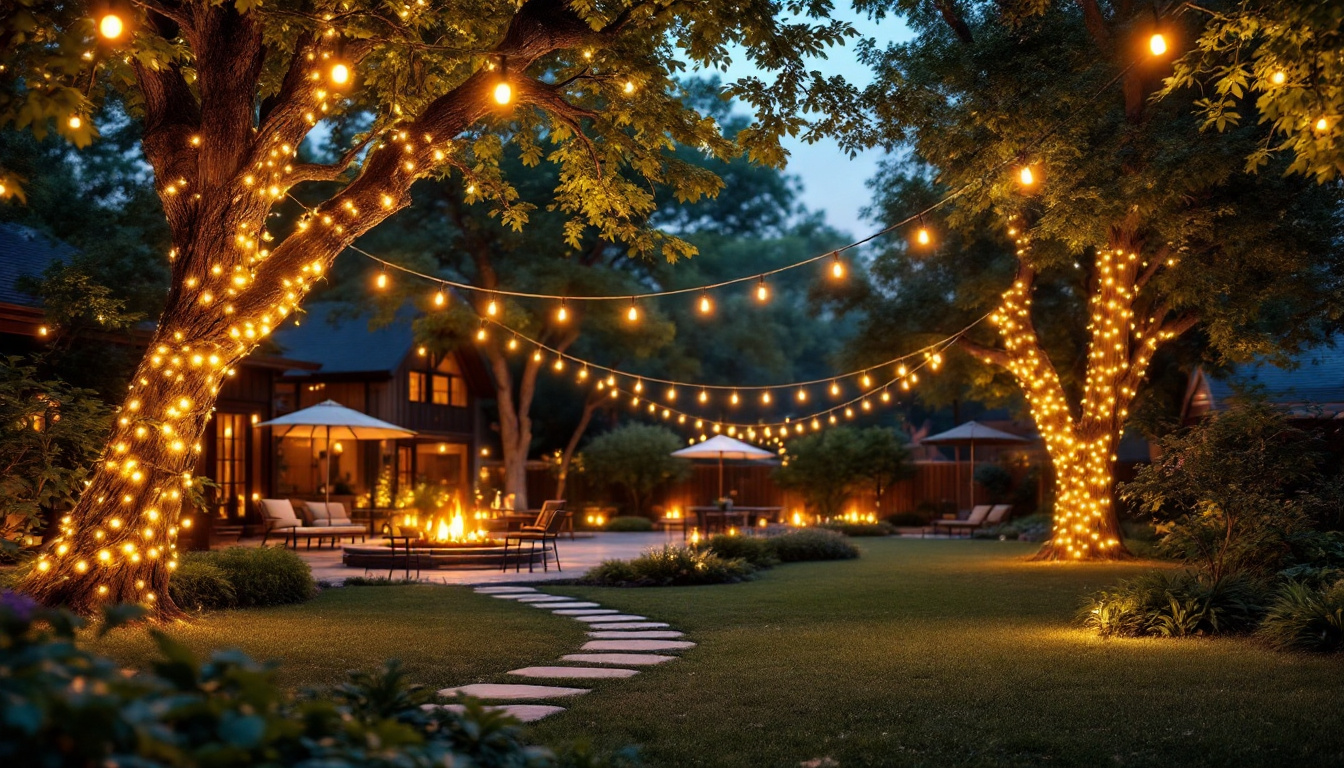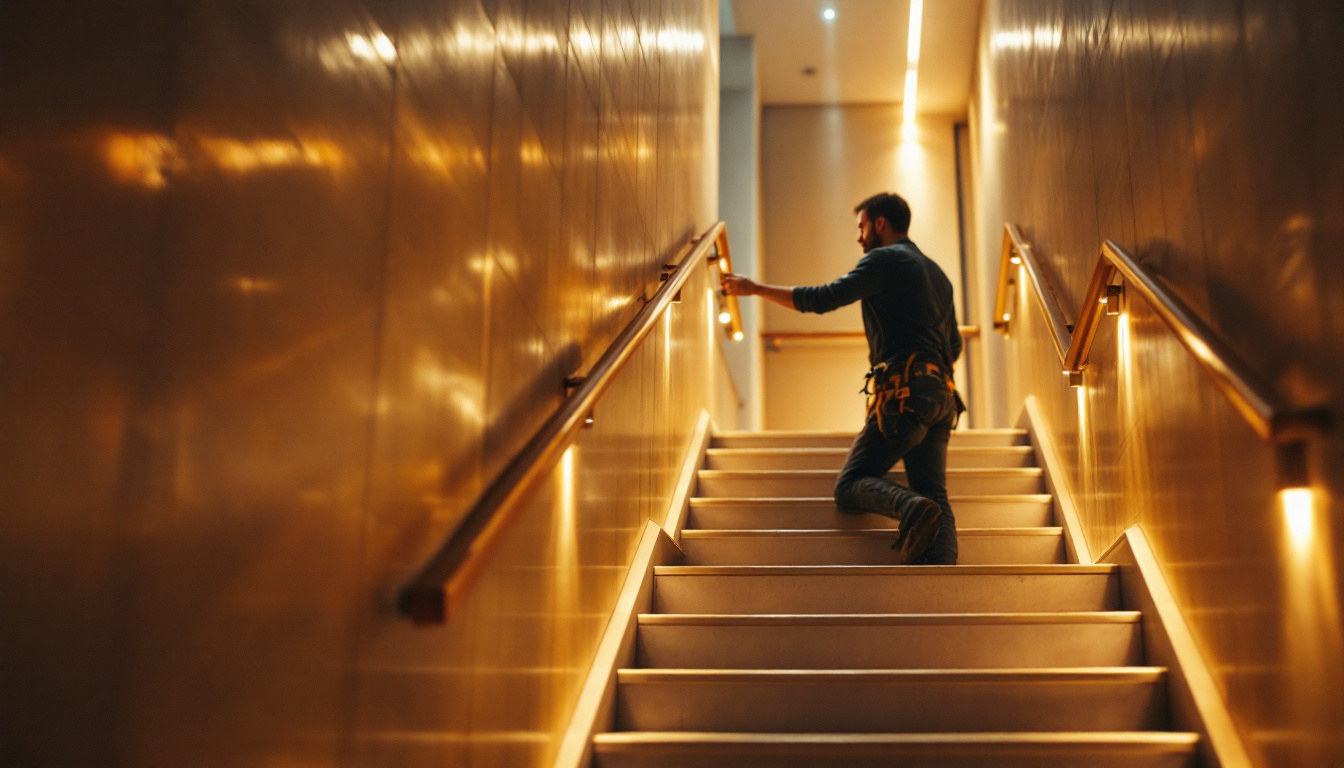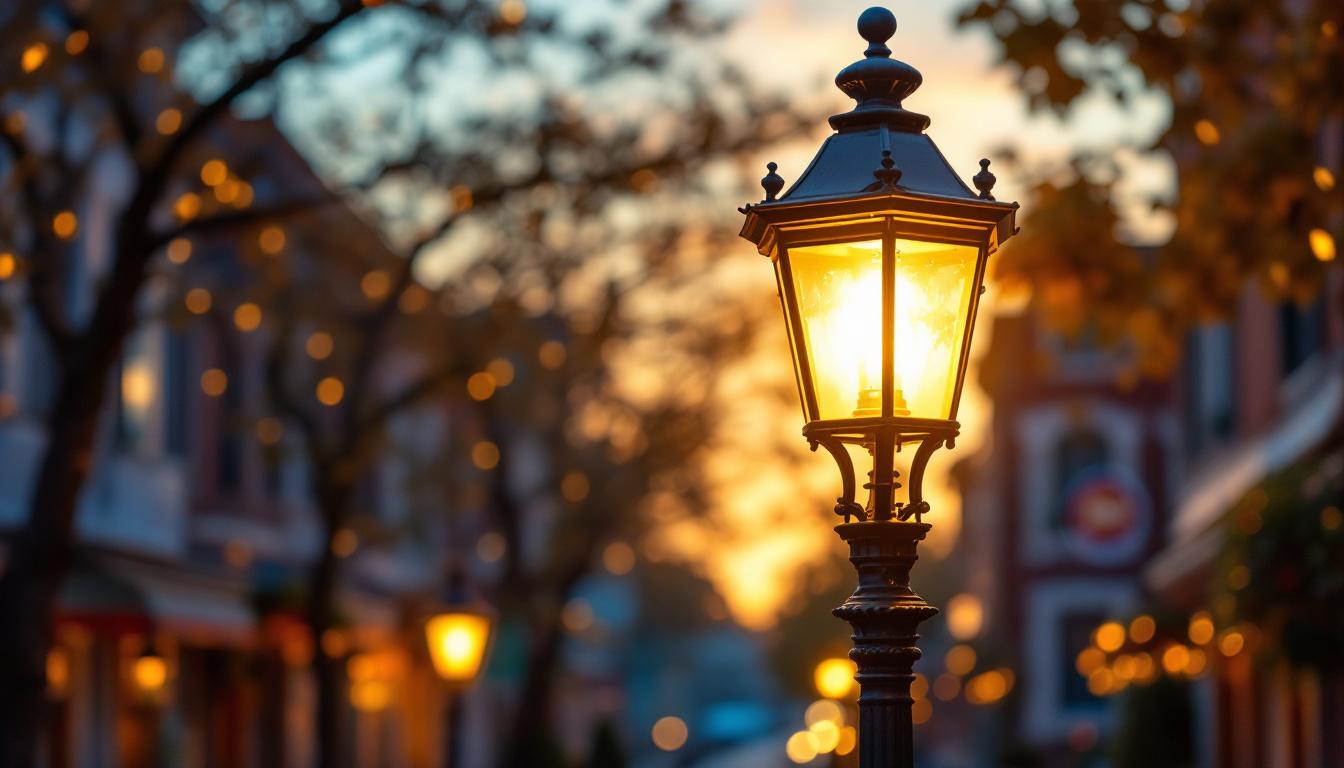
backyard string lighting has become a popular choice for homeowners looking to enhance their outdoor spaces. As a lighting contractor, understanding the best practices for installing and maintaining these lighting systems is essential. This article explores the intricacies of backyard string lighting, offering insights into design, installation, and maintenance that will help contractors deliver exceptional results for their clients.
String lighting, often referred to as fairy lights or bistro lights, consists of a series of small bulbs attached to a flexible wire. These lights can create a warm and inviting atmosphere, making them ideal for patios, gardens, and outdoor gatherings. However, the appeal of string lighting goes beyond aesthetics; it also serves practical purposes, such as providing safety and visibility during evening events. The soft glow emitted by these lights can enhance the beauty of outdoor spaces, transforming them into enchanting retreats where friends and family can gather and create lasting memories.
When selecting string lights for a project, it’s crucial to understand the different types available. Common options include incandescent, LED, and solar-powered lights. Each type has its unique characteristics, advantages, and disadvantages.
Incandescent lights offer a warm glow and are often less expensive upfront, but they consume more energy and have a shorter lifespan. LED lights, on the other hand, are energy-efficient, long-lasting, and available in various colors and styles. Solar-powered string lights are an excellent choice for eco-conscious clients, as they harness sunlight to operate, reducing electricity costs. Additionally, many solar options come with built-in sensors that automatically turn the lights on at dusk and off at dawn, adding convenience to their environmental benefits.
Before installation, contractors should work closely with clients to determine the desired ambiance and functionality of the lighting. Considerations such as the layout of the outdoor space, existing landscaping, and intended use of the area will influence design choices.
For instance, creating a cozy dining area may require different lighting arrangements than illuminating a pathway. Additionally, contractors should consider the height and spacing of the lights to achieve the desired effect, ensuring that they are neither too dim nor overly bright. Incorporating dimmable options can also provide versatility, allowing homeowners to adjust the brightness according to the occasion, whether it’s a lively party or a quiet evening under the stars. Furthermore, the use of decorative elements, such as lanterns or colored bulbs, can enhance the overall aesthetic, making the string lights a focal point of the outdoor design.
Proper installation is crucial for the longevity and effectiveness of backyard string lighting. Following best practices can help contractors avoid common pitfalls and ensure a professional finish.
Before any physical installation begins, it’s essential to plan the layout of the string lights. Using design software or sketching the area can help visualize how the lights will look once installed. Marking key points where the lights will hang can also assist in determining the best placement for poles or anchors.
Contractors should consider the power source and ensure that it is easily accessible. If the lights require a plug-in, the location should be near an outlet, or an extension cord should be used safely and discreetly. For solar-powered options, ensure that the solar panel receives adequate sunlight throughout the day. Additionally, it’s wise to consider the seasonal changes in sunlight and how they might affect the performance of solar lights, particularly in winter months when days are shorter.
Once the layout is planned, the next step is to secure the lights properly. Depending on the design, string lights can be hung from trees, poles, or walls. Using durable materials such as stainless steel hooks or weather-resistant zip ties can help ensure that the lights remain in place, even in adverse weather conditions.
It’s important to maintain a consistent height throughout the installation. This not only enhances the aesthetic appeal but also prevents any potential hazards, such as lights hanging too low in high-traffic areas. Using a measuring tape can help achieve uniformity. Moreover, consider the spacing between lights; too close together may create a cluttered look, while too far apart can diminish the overall effect. A good rule of thumb is to space lights about 3 to 5 feet apart, depending on the desired brightness and ambiance.
For contractors, understanding electrical requirements is vital. Ensure that all string lights are rated for outdoor use and that they meet local electrical codes. Overloading circuits can lead to serious safety hazards, so it’s essential to calculate the total wattage of all lights and ensure that the circuit can handle the load.
Using weatherproof connectors and junction boxes can also help protect the electrical components from the elements. Additionally, consider installing a timer or smart control system to allow clients to manage their lighting easily. This not only adds convenience but can also enhance energy efficiency, allowing homeowners to set schedules for when the lights turn on and off, thus reducing unnecessary energy consumption. Furthermore, educating clients on the benefits of LED string lights, which consume less power and have a longer lifespan, can be a valuable selling point during the consultation phase.
Once the string lights are installed, ongoing maintenance is necessary to keep them in optimal condition. Educating clients about maintenance practices can enhance their satisfaction and prolong the life of the lighting system.
Encourage clients to conduct regular inspections of their string lights, especially after severe weather events. Checking for loose connections, damaged bulbs, or frayed wires can help identify issues before they become significant problems.
During inspections, it’s also a good time to clean the lights. Dust, dirt, and debris can accumulate on the bulbs, diminishing their brightness. A gentle wipe with a damp cloth can restore their shine and improve overall performance. Additionally, remind clients to check the power source and ensure that any extension cords or outlets used are in good condition, as this can prevent potential electrical issues and enhance safety.
In regions with harsh winters, it may be necessary to remove string lights during the off-season. This not only protects them from damage due to snow and ice but also reduces the risk of electrical hazards. If lights are left up, ensure that they are designed to withstand winter conditions.
For clients who prefer to keep the lights up year-round, recommend using weather-resistant options that can handle various climates. Additionally, suggest that they store any removable components, such as solar panels, indoors during extreme weather. It’s also beneficial to advise clients on the importance of checking the manufacturer’s guidelines regarding temperature tolerances and maintenance schedules, as adhering to these recommendations can significantly extend the lifespan of the lights.
Furthermore, clients should be encouraged to consider the placement of their string lights. Avoiding areas where they might be exposed to excessive moisture or direct contact with snow can help reduce wear and tear. Suggesting the use of protective covers or enclosures can also provide an extra layer of defense against the elements, ensuring that their festive ambiance remains intact throughout the seasons.
String lights offer versatility in design and can be used in various creative applications. Contractors can suggest unique ideas to clients that enhance their outdoor spaces and create memorable experiences.
Backyard string lighting is perfect for events such as weddings, parties, or family gatherings. Creating a magical atmosphere with twinkling lights can elevate any occasion. Consider using different styles and colors of lights to match the theme of the event.
Contractors can also suggest incorporating dimmers or smart lighting systems to adjust the brightness according to the mood of the event. This flexibility allows for a seamless transition from daytime gatherings to evening celebrations.
Incorporating string lights into landscaping can draw attention to specific features, such as trees, pathways, or garden beds. Wrapping lights around tree trunks or draping them over shrubs can create a stunning visual effect.
Additionally, using lights to illuminate pathways can enhance safety while adding charm. This approach not only improves visibility but also guides guests through the outdoor space, making it more inviting.
As a lighting contractor, effective communication with clients is key to ensuring their satisfaction. Educating clients about string lighting options, installation processes, and maintenance practices can help build trust and foster long-term relationships.
Providing clients with resources, such as brochures or links to helpful websites, can empower them with knowledge about string lighting. This information can include tips on energy efficiency, design inspiration, and maintenance schedules.
Additionally, offering a follow-up service after installation can enhance customer satisfaction. Checking in on clients to see how their lighting is performing and addressing any concerns can demonstrate a commitment to quality service.
Encouraging clients to provide feedback on their lighting experience can offer valuable insights for future projects. Understanding their preferences and any challenges they faced can help contractors refine their services and improve overall client satisfaction.
Moreover, positive testimonials can serve as powerful marketing tools, showcasing the contractor’s expertise and the quality of their work.
Backyard string lighting presents an excellent opportunity for lighting contractors to enhance outdoor spaces and create memorable experiences for clients. By understanding the types of string lights available, following best installation practices, and providing ongoing maintenance tips, contractors can ensure successful projects that meet client expectations.
Moreover, fostering open communication and educating clients about the benefits and care of string lighting can lead to lasting relationships and repeat business. As outdoor living continues to grow in popularity, embracing the art of backyard string lighting will undoubtedly set contractors apart in a competitive market.
Ready to elevate your outdoor lighting projects with the best in string lighting solutions? At LumenWholesale, we provide lighting contractors like you with top-quality, spec-grade lighting products at unbeatable wholesale prices. Say goodbye to local distributor markups and hello to superior lighting products that meet the highest industry standards. With our hassle-free bulk buying and free shipping, you can ensure every outdoor space shines brightly without breaking the bank. Don’t compromise on quality, affordability, or convenience. Choose LumenWholesale for Wholesale Lighting at the Best Value and make your next lighting project a dazzling success.

Discover how LED spotlights for stairs can revolutionize lighting projects for contractors by enhancing efficiency, reducing energy costs, and providing superior illumination.

Discover why LED drivers are essential for every lighting contractor in this insightful article.

Discover the history of the first gas street lamp in America and learn expert tips to maximize profitability in lighting installations.

Explore the strategic advantages for lighting contractors in concealing outdoor lights.